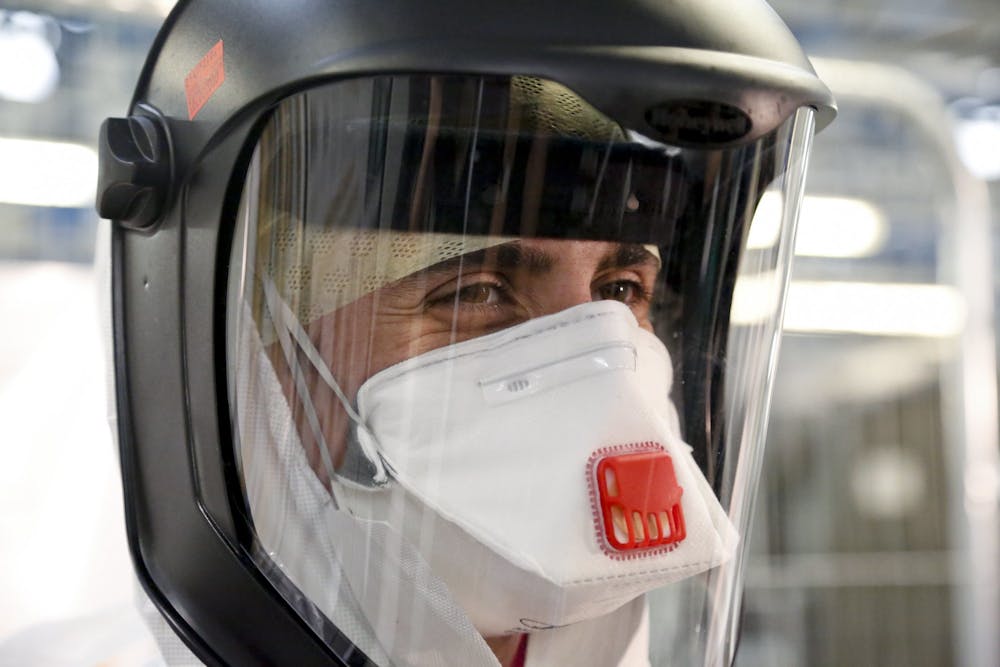As the number of cases of coronavirus (COVID-19) surges in the U.S., a shortage of medical supplies has emerged, among which personal protective equipment (PPE) such as masks and gloves have taken the greatest hit. The shortage is in part the result of public panic, which has resulted in many citizens buying these supplies in bulk.
Despite an announcement from the U.S. surgeon general, who claims that masks do not protect the general public from contracting the virus, many anxious citizens still hoard masks and gloves, putting medical professionals at risk of infection while they take care of patients without proper PPE.
This anxiety is not unjustified, especially in a time of uncertainty when experts are providing conflicting information. Dr. Anthony Fauci, Director of the National Institute of Allergies and Infectious Diseases (NIAID), has a slightly different opinion on the use of masks. In an instagram interview with National Basketball Association star Stephen Curry, Fauci noted that masks can protect average citizens, but that they are at a lower risk of infection than healthcare workers.
“When we say you don’t need to wear a mask, what we’re really saying is that make sure you prioritize it first to the people who need the masks,” Fauci said.
Fauci went on to explain that “some degree of protection” could be gained by anyone wearing a mask when out in public.
Aside from disagreement between experts, each country has a different policy regarding mask-wearing, which has fueled panic. In China, mask-wearing was mandatory for citizens on grocery runs during the nationwide lockdown. In South Korea, the government upregulated mask production and restricted exports in an attempt to ensure enough face masks for the public.
The different guidelines endorsed by experts within the U.S. and in other nations help drive panic buying. In an interview with The News-Letter, junior Neuroscience and Psychology major Grace Kim agreed with Fauci, noting her desire for any level of protection.
“Even though there are many people telling the general public that masks are not effective for healthy people who are trying to not get sick, I still think that masks help prevent droplet transmission to some extent... and some sort of prevention is better than none,” Kim said.
In addition to citizens mass purchasing, a major supply issue has also contributed to the shortage. China had been the largest supplier of masks, with a 50 percent share in that market. However, the outbreak of COVID-19 caused its exports to dwindle. Despite a drastic expansion of mask production in China, most of this is being directed for domestic use.
As the pandemic in China becomes better controlled, mask supplies are being made more available for export. According to John Polowczyk, rear admiral of the Federal Emergency Management Agency, who is running the organization’s coronavirus supply chain task force, a plane from Shanghai carrying loads of PPE arrived in New York City on March 29. Polowczyk, a senior naval officer, told Axios that this would be one of many medical supplies airlifts to come.
“We have essentially a flight a day, mostly from Asia,” he said.
Polowczyk explained that the first shipments would be directed to alleviate the dire shortage of PPE in New York City. This week, Mayor Bill de Blasio stated that the city only had sufficient medical supplies to last through Sunday April 5.
Meanwhile, various hospitals have begun their own efforts to produce more PPE for their staff. The University of Maryland Medical Center has instituted the COVID-19 DIY Masks initiative, which engages the community in the production of cloth masks at home. Volunteers at Hopkins Hospital are also helping to produce face shields and personal protective equipment.
Many members of the Hopkins community have banded together to address this issue, including medical students who have joined the University’s initiative to produce approximately 5,000 plastic face shields per day and lab-based researchers who organized a PPE drive for their colleagues on the front lines.

















